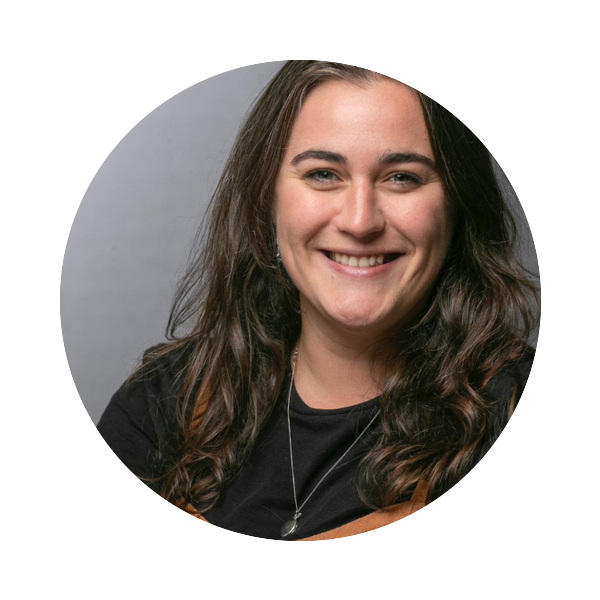Huntington Study Group (HSG) 2020 Annual Conference: HD in Focus - Day 1
Read our breakdown of some of the talks and presentations at day 1 of the Huntington Study Group (HSG) 2020 annual conference: HD in focus
 By Dr Rachel Harding October 30, 2020 Edited by Dr Leora Fox
By Dr Rachel Harding October 30, 2020 Edited by Dr Leora Fox
The Huntington Study Group (HSG) is a clinical research network focused exclusively on HD. Yesterday the HSG annual conference began with a schedule jam-packed with virtual talks from researchers, clinicians and different companies who are all working towards finding new medicines for HD. The day encompassed many interesting presentations which covered a lot of the recent developments in HD drug discovery.
Presentations from the experts on cutting-edge ideas for new medicines
The first science talk was from Darren Monckton (University of Glasgow) who discussed the role of somatic instability in HD. Somatic instability refers to the fact that the CAG repeat number can change over time, with faster increases associated with worsening symptoms for HD patients. You can read more on somatic instability in this recent deep-dive HDBuzz article on the topic. Monckton’s team is looking at somatic instability in large groups of HD patients, using samples and data from both Enroll-HD and Track-HD. Thanks to the patients who contributed to these projects, the Monckton lab has seen that somatic instability can be observed in patient blood samples. Being able to measure the CAG repeat instability in a blood, which is more easily obtained than spinal fluid, could prove a useful tool for researchers as they look for medicines that slow down the levels of instability in patients.

Next up was a talk from Beverly Davidson (Children’s Hospital of Philadelphia) who discussed genetic engineering approaches that might be good therapies for HD in the future. In particular, the Davidson lab is interested in how a technology called CRISPR might be used to lower the amounts of the mutant HTT protein whilst keeping the levels of the normal HTT protein unaltered. You may have heard that the scientists behind using CRISPR to edit genomes were recently awarded a Nobel prize. The field of CRISPR scientists is working on many new developments for the technology which researchers hope will quicken its safe use in precisely treating human diseases very soon.
Highlights of Dr. Tabrizi’s keynote talk
The keynote talk was from Sarah Tabrizi (UCL). First, Tabrizi gave an overview of the HD Young Adult Study which HDBuzz covered earlier this year. This study compared young symptom-free HD gene carriers with a control group to try and work out when disease markers can first be detected. Studying young people before symptoms develop could be useful to determine the best treatment time frame for slowing, stopping, or ideally preventing HD. The young HD patients show no cognitive or psychiatric differences to non-HD control trial participants. However, some chemical changes can be detected between the two groups, even this early on. The most significant difference is that young HD gene carriers have higher levels of a protein called NfL in their spinal fluid. Tabrizi and colleagues think that NfL levels could be a useful biomarker for monitoring HD progression and could help clinicians decide when and how to treat a patient. In the second part of her talk, Tabrizi covered some of the promising therapies which are currently still being studied in the lab, but could be entering clinical trials in the future. Tabrizi highlighted the protein MSH3, which may influence disease progression in HD patients. MSH3 was originally discovered as a hit in the GWAS analysis and has been furiously studied by researchers around the world since. Lowering the amounts of MSH3 protein has been shown by the Tabrizi lab to prevent somatic expansion in human cells in a dish, but whether MSH3 lowering would slow disease progression in HD patients remains to be seen. Another interesting therapy highlighted by Tabrizi is the HTT-lowering approach from the pharmaceutical company Takeda which uses zinc-finger technology to specifically lower the levels of the mutant HTT protein, not the normal HTT protein. Finally, Tabrizi highlighted the work of the HD regulatory science consortium (RSC) which is working to harmonise clinical research practises in HD research around the world with the goal of advancing drug candidates from the lab to the clinic.
More talks on the latest in HD therapy development and data from HD patient trials
A series of brief presentations covered this year’s findings and plans from HSG’s working groups on a variety of topics, including the use of telehealth, development of digital tools to measure symptoms, the experience of neuropsychologists who are treating HD patients, and ways to incorporate patient voices in their own words.
The next talk was from Carlos Cepeda (UCLA) who is looking at the role of a region of the brain called the cortex in HD. Cepeda described how HD patients have abnormalities in their cortex. In particular, this abnormal brain development could help explain some of the symptoms observed in extreme forms of HD such as the rare juvenile-onset HD (JOHD). Jordan Schultz (University of Iowa) continued in this theme and discussed the JOHD observational study called Kids-JHD which set out to learn and understand more about the symptoms and progression of JOHD.
Paul Zeun (UCL) further explained some of the work of the HD-YAS presented by Sarah Tabrizi earlier in the day. Zeun and colleagues looked for lots of different proteins in the spinal fluid samples they collected from the HD-YAS participants to try and find a reliable biomarker but only NfL looked reliable to track HD progression from the very earliest of stages.
Juan Sanchez-Ramos (University of South Florida) spoke about finding better ways to administer gene therapies to HD patients. Currently, a number of the different HD therapies under clinical investigation require a spinal injection or brain surgery. These methods are expensive, inconvenient for patients and have some risks associated with them. Sanchez-Ramos and colleagues have been investigating whether spraying the medicine up the nose (intranasal administration) might work well instead. Their approach is to pack a huntingtin-lowering therapy into tiny carriers called nanoparticles that can be delivered nasally. They have successfully tested this in a mouse model of HD and hope to find an industry partner who wants to work towards testing this in humans.
Company updates on development of their novel therapies
The first day was concluded with some short talks from different companies who are all working on different approaches to treat HD:
Triplet Therapeutics are hoping to lower somatic instability in patients with their drug candidate but are first conducting a natural history study called SHIELD-HD which we covered in our recent piece on the EHDN meeting.
NeuExcell Therapeutics are using regenerative medicine approaches which will help to rebuild parts of the brain which are damaged in HD patients. In HD animal models their therapies work well in restoring certain types of important brain cells and they hope to start clinical trials for HD patients in 2022.
Mitochon Pharmaceuticals are using existing drugs which target mitochondria (the energy powerhouses in our cells). Mitochon scientists hope that this will stop the production of reactive oxygen species in HD patients which are thought to have lots of detrimental knock-on effects.
Neubase Therapeutics have developed an agent which can lower mutant HTT in lab conditions and has been shown to spread throughout the whole body in animal studies. They hope this will mean they can treat HD as a whole system disease. However, there is still a lot of work to do to show their approach works to lower HTT in HD animal models.
We are looking forward to another busy day of presentations on Day 2.


